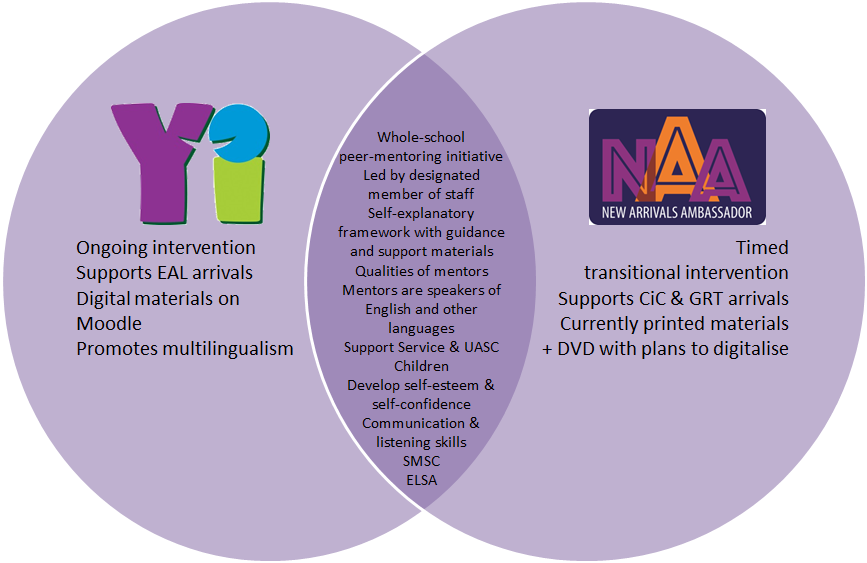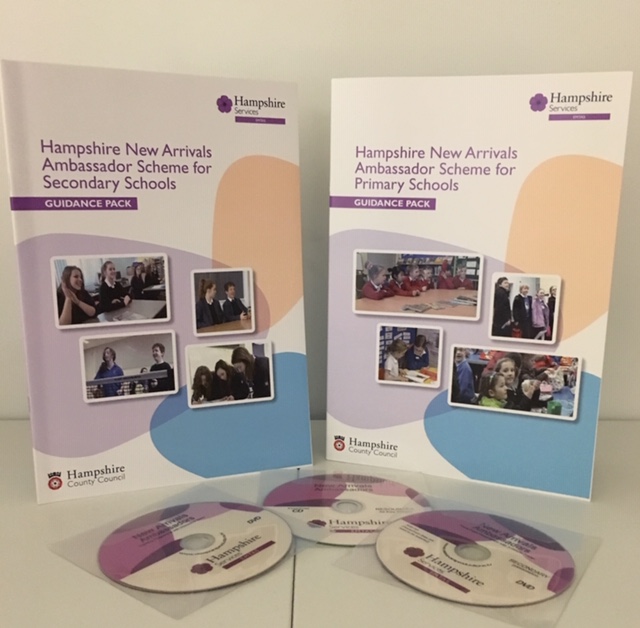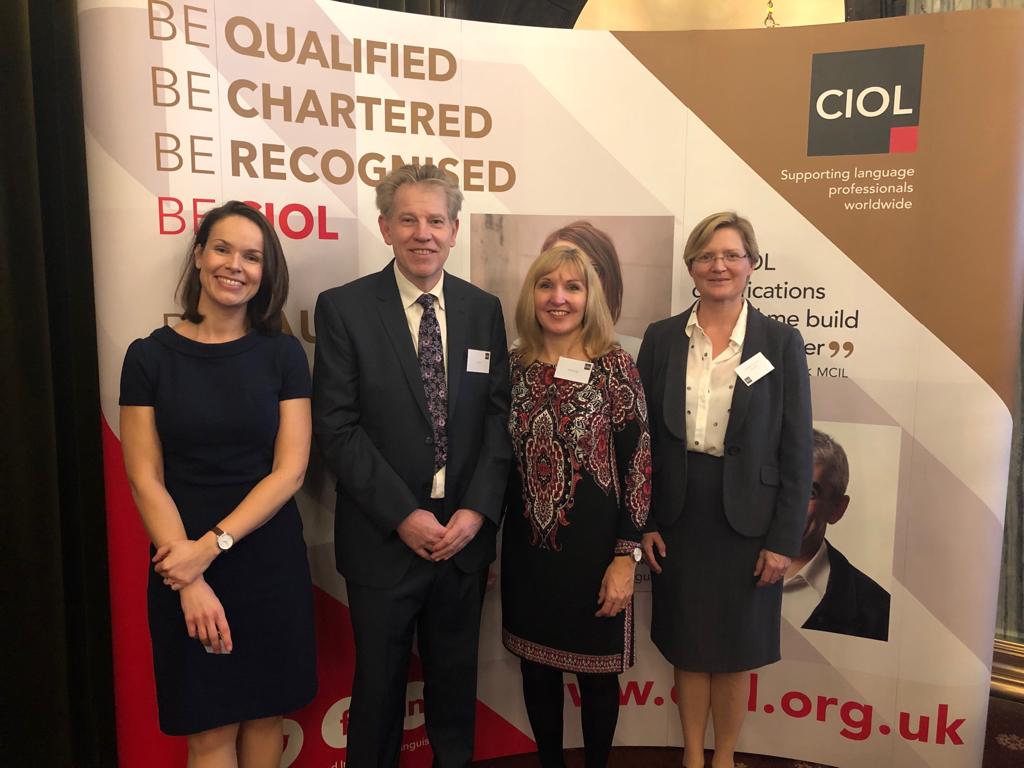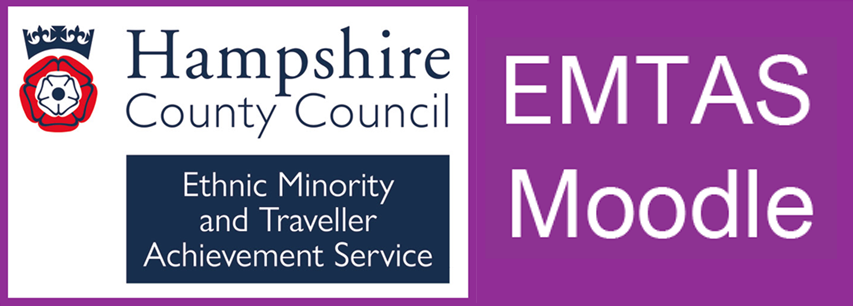Site blog
In a previous blog, Claire Barker and Astrid Dinneen discussed the benefits of setting up the New Arrival Ambassador and/or Young Interpreter Scheme for different groups of pupils. In this blog Louise Ret, Acting Principal Teacher at Gylemuir Primary School in Edinburgh, shares her experience of working with New Arrival Ambassadors to welcome a range of children joining school part-way through the year.
Gylemuir Primary is a non-denominational school located in Edinburgh. We have 570 pupils who come from a diverse range of faiths, cultures and countries. Over the past several years we have seen an increase in the number of pupils joining the school during the academic year, including pupils with English as an Additional Language. This is in large part due to the fact that our local community comprises many large banks and businesses that recruit staff from overseas, usually on a 2 year basis.
Moving
to a new school is challenging for any child, even if it’s five minutes away
from their current setting – but many of our families are also contending with
language barriers, an unfamiliar curriculum and a new job, often without the
support systems of family and friends. It became clear that we needed a way to
make families feel welcome and supported when they arrive at Gylemuir. We chose the New Arrival Ambassador
Scheme because the resource offers support to a range of pupils –
including non-EAL pupils who join our school at irregular times in the school
year.
The
New Arrival Ambassador scheme has been a fantastic resource for the school
because it offers a structured approach to training pupils in peer mentoring.
In 2018 the pupils went through an application and interview process to gain a
spot as an Ambassador and this year they have taken ownership of recruiting new
Ambassadors by creating their own application form and interview questions. We
had over fifty applicants from P5-P7, proving that the children see this as an
exciting and worthwhile role.
As
soon as a new pupil arrives at Gylemuir they are given a tour of the school by
our Ambassadors. At break and lunch time the Ambassadors find their new arrival
and buddy up with them to play games and explore the playground. They are
always on hand to offer support and guidance, and we all check in with each
other at weekly meetings to share how our new arrivals are getting on and offer
ideas on how to support each other. We are always looking at ways to improve
and expand the role of the Ambassadors – recently this involved working with a
group of teachers from Holland who were visiting our school!
Whilst the
scheme has helped pupils with English as Additional Language, it also provides
support to pupils who have moved from within Edinburgh. A new pupil recently
arrived from another school in the area and not only has she been helped
by the Ambassadors, she has now become an Ambassador! Having someone on hand to
welcome her allowed her to find her place in Gylemuir quickly and confidently.
Ultimately,
pupil wellbeing is at the centre of the scheme. Having an Ambassador buddy
means that pupils are nurtured, respected and included from the moment they
arrive at Gylemuir. For the Ambassadors themselves, the role offers an
opportunity to demonstrate their ability to be responsible and achieve success
in the wider school setting.
The
best part of the New Arrival Ambassador Scheme has been seeing how enthusiastic
the pupils are about their role. They take so much pride in sharing and
embodying our school values of Welcoming, Supportive, Creative and Happy and
encourage everyone in the school to do the same.
Louise Ret, Acting Principal Teacher at Gylemuir
Primary School
Twitter: @MissRet1 @gylemuirprimary
Visit the Hampshire EMTAS website to find out more and sign up to the New Arrival
Ambassador Scheme. Read this blog to learn more about the similarities and differences between the New
Arrival Ambassador Scheme and the Young Interpreter Scheme.
Subscribe to our Blog Digest (select EMTAS).
Several articles about the Young Interpreter (YI) Scheme and New Arrivals Ambassador (NAA) Scheme have already featured in the Hampshire EMTAS blog and many schools in Hampshire and across the UK are running either peer mentoring scheme - sometimes both - to support their new arrivals. Other schools have questions. Which scheme should we go for? Do they overlap? What difference is there? Our scheme managers Astrid Dinneen (YI) and Claire Barker (NAA) shed some light.

© Copyright Hampshire EMTAS 2019
Q: How did the schemes come about? Why did EMTAS decide to develop two separate schemes?
Astrid Dinneen: Back in 2004 we saw an increase of new EAL arrivals in schools after the accession of several countries to the EU. To support the well-being of these children, Hampshire EMTAS worked with school-based practitioners in four Hampshire schools to develop the Young Interpreter Scheme. The aim was to create a special role and train children/young people to become buddies and help new-to-English arrivals to feel welcome and settled. We are very proud to have won several awards since piloting the YI Scheme. Can you believe that the scheme is running in over 900 schools now?
Claire Barker: The New Arrivals Ambassador Scheme was borne out of a need by Children in Care, Traveller Children and Service Children to gain extra support when they arrived in schools at irregular times of the school year. Like the Young Interpreter Scheme, the aim was to support the well-being of these groups of children and to ensure they had a smooth transition into their new setting. The idea was to provide a short, sharp, peer mentoring programme lasting about half a term or in line with the needs of the newly arrived child. The scheme evolved after a successful piloting period that involved six schools covering all three phases.
Q: So each scheme is designed to support different groups of children, is it?
Astrid Dinneen: Yes. If your aim is to support EAL pupils whilst promoting the linguistic diversity of your school community then you may like to consider the Young Interpreter Scheme.
Claire Barker: And if your aim is to support all children joining your school at irregular times of the school year, including Children in Care, Traveller children and Service children, then you may like to consider the New Arrivals Ambassadors Scheme.
Astrid Dinneen: Of course some Service children and Children in Care (and particularly Unaccompanied Asylum Seeking Children) will also have English as an Additional Language so it's worth considering your school's needs carefully. Some schools are successfully running both schemes.
Q: How would running both schemes look?
Astrid Dinneen: An important feature of the YI and NAA schemes is that each is delivered by a designated member of school staff. In schools where both schemes are running it’s a good idea for each to be led by different people who can cater for their own scheme’s specificities and also collaborate on joint work. For example, the Young Interpreter Co-ordinator will buddy up Young Interpreters with new EAL arrivals. When a new EAL arrival also happens to be a Service child, then Young Interpreters can work alongside New Arrival Ambassadors to show them the ropes.
Another important aspect of running the Young Interpreter Scheme is that the Co-ordinator regularly meets with the Young Interpreters to guide them and keep them motivated in their role. This follow up phase could be another opportunity for joint work and there are suggested activities on the YI’s Moodle. For example, why not work together to promote both NAA and YI roles by creating a movie trailer?
In terms of pupil selection I think the qualities you would look for in Young Interpreters are similar to those you would expect from a New Arrival Ambassador. Pupils should be friendly, empathetic, welcoming and good communicators. Young Interpreters can be speakers of English only and they can be speakers of other languages too. The same could be said of the NAA, couldn’t it?
Claire Barker: It certainly could and the schemes complement each other when both are running in the same school setting. It is worth remembering that the NAA Scheme is a timed transitional intervention whereas the YI Scheme is ongoing with its support. The aim of the NAA is to develop the self-esteem and self-confidence of the newly arrived child so they are able to function independently after half a term.
I agree with Astrid that the two schemes work better when managed by different people in the school so the lines of what each scheme has to offer do not become blurred. Whilst the skills and qualities of a Young Interpreter and an Ambassador are virtually the same, the job description is very different and each has its own demands and specialist areas for the trained pupils. NAA pupils have to learn to build relationships and trust quickly as their support is delivered over a short period of time. Schools do utilise the trained Ambassadors in different ways throughout the year. Some schools use the Ambassadors to support the new intake in September and to work with classes and tutor groups throughout the academic year. Many schools use the Ambassadors alongside their School Council to represent the school on Open events like Parents’ Evenings. Some schools use their Ambassadors to support existing pupils who are struggling with their well-being and life at school. The scheme has flexibility to be adapted to the setting it is being used in.
Both schemes complement each other and pupils who are Young Interpreters and Ambassadors are highly skilled and proficient peer mentors who can offer linguistic support, well-being support and transition support. Both schemes develop self-esteem and confidence in the Young Interpreters and Ambassadors as well as in the pupils they are supporting and provide opportunities for personal growth.
Q: Where can our readers find out more?
Astrid Dinneen: You can learn more about the Young Interpreters on our website, follow us on Twitter or Facebook or read the December issue of the Young Interpreters Newsletter.
Claire Barker: There is information about the NAA on our website. You can also use the tabs below to read other blogs relating to both schemes.
By Laura Harman-Box, Year 6 teacher with responsibility for the New Arrival Ambassadors (NAA) at Talavera Junior School with an introduction from EMTAS Specialist Teacher Advisor Claire Barker.

Recently I had the pleasure of working in Talavera Junior School in Aldershot. I went to train thirteen young people to be New Arrival Ambassadors (NAA). Talavera Junior School is a very diverse school that welcomes children from many counties, cultures and religions. Many of their children are from Service families and this is one of the groups than New Arrivals Ambassadors works particularly well with. Many Service children are used to transition in their lives and are able to talk confidently about what makes a good transition for them. The children who have experienced transition all say how they wished they had had a New Arrivals Ambassador when they went to their new school. It highlights to the whole cohort that is being trained that everyone - adults and children - experience the same fears and insecurities when faced with a new challenge and setting. Laura Harman-Box, Year 6 teacher at Talavera with responsibility for NAA had this to say after the training:
The New Arrival Ambassador Scheme seemed like a perfect fit for our school, working both as a welcoming system for our high level of new entrants and as a chance to develop leadership qualities in our pupils.
As a school in a garrison town, our school population can be very turbulent. This is, understandably, difficult for some pupils, particularly when they find it hard to then find their place in their new environment. We believe that we offer great support for pupils who enter at an unusual time of the year but are also aware that some pupils will need additional transitional support. Who better to deliver this than the peers with whom our new arrivals will be learning, playing and growing?
We chose our New Arrival Ambassadors based on the emotional literacy level of the children and children who would themselves benefit from taking on a role of responsibility within our school. The training itself was such a positive experience, in part because of the diverse range of children (ethnically, culturally, age-wise, academically, with regards to interests) who could bring an eye-opening number of experiences to this scheme. Encouraging and providing opportunities for all pupils is a fundamental value of our school, especially leadership roles. The NAA Scheme has provided us the chance to give this opportunity to children who may not otherwise always get it.
Our pupils' well-being is a continued focus for us and the
NAA scheme provides another valuable way of ensuring all pupils feel safe,
comfortable and ready to learn. This is the start of a journey for our New
Arrivals Ambassadors, one that they cannot wait to begin! Here are their comments:
Today we learnt about becoming a New Arrival Ambassador and how we can help new arrivals with settling in their new class without making them panic. We learnt today that new arrivals can choose who they want to be friends with, which surprised some of us. We thought it would be our job to be their friend but our trainer, Claire, helped us to understand that everyone should choose their own friends. We were taught that if a new arrival tells us something and it is serious, we must tell the teacher immediately due to the fact that we can't always help them. We've learnt that a New Arrival Ambassador is a very important job and we must work hard to continue to represent our school and make every new pupil feel comfortable and safe here. We look forward to being New Arrival Ambassadors!
Visit the Hampshire EMTAS website to find out more about the NAA and come back soon to read a blog comparing the NAA with the Young Interpreter Scheme.
Astrid Dinneen shares the exciting news

Left to right: Astrid Dinneen, Chris Pim, Michelle Nye & Sarah Coles
The Young Interpreter Scheme® has featured in several articles since the inception of the Hampshire EMTAS blog and this was mostly with a view to share best practice when using children and young people as buddies in school. In this article we are blowing our own trumpet and telling you about the latest award received by Hampshire EMTAS for the scheme.
On Wednesday 14 November, The Chartered Institute of Linguists (CIOL) held their annual award ceremony which celebrates "the importance of language and cultural understanding, the value of languages to business and industry and excellence in language learning". Awards were given to individuals, teams, organisations, schools and language centres who all demonstrate excellence in language learning, translation and interpreting. The Threlford Memorial Cup, CIOL's most prestigious award was given to the Young Interpreter Scheme®.
The cup was first presented in 1935 by Sir Lacon Threlford, Founder of the Institute of Linguists. In the archives of the time the cup was described as "the world's greatest trophy for fostering the study of languages" – so a huge achievement and a massive honour for Hampshire EMTAS which I was proud to represent alongside my colleagues Michelle Nye, Sarah Coles and Chris Pim seen on the photo above.
This historical cup stays with the CIOL however we are keeping an engraved medal and a certificate which I look forward to showing everyone involved in the scheme. I particularly want to dedicate this award to everyone who has contributed to the success of the scheme over the years: the children and young people, the schools, the Young Interpreter co-ordinators, the practitioners who shaped the scheme right from the beginning, the whole Hampshire EMTAS team and all our supporters in the field of EAL.
I know that Young Interpreters and practitioners in schools across the UK - and beyond - will be so excited at the news. And who knows, perhaps one day the CIOL will be giving accolades to linguists who started off as Young Interpreters… So watch this space!
In the meantime why not log into your Young Interpreter Moodle account, sign up to the scheme, follow us on Twitter or Facebook or read the December issue of the Young Interpreters Newsletter?
By Hampshire EMTAS Bilingual Assistant Eva Molea

© Copyright Hampshire EMTAS 2018
I never trusted my mum when she told me that being an EAL parent was not easy. I regret to admit that it has more challenges that I expected. In the first chapter of my diary I went down memory lane, writing about my experience as an EAL child. The second chapter was about how I made my daughter feel comfortable in her new environment. This chapter focuses on strategies I used at home to support learning.
Supporting learning
If helping Alice to settle in could be achieved following one’s own gut feeling, supporting her learning in English needed to be done in a less instinctive way. Before leaving Italy, I had taken Alice to the GP for a check-up and asked if he had any advice about how to support her acquisition of the second language. He told me that he assumed that she would pick it up in school without me doing anything special, but told me that we HAD to speak Italian at home because all the emotional life of a person flows through their first language. So we did, and still do, stick to this rule strictly. It would always be Italian at home or when it is just the three of us, and English when we are with other people.
Since I knew that I would be moving to the UK anytime soon, in September 2014 I enrolled Alice in Year 1 in a private school, so when she started school in the UK she could already read, write and count and she could transfer these abilities to English. I have to say that Alice’s school in the UK was amazing. They made her feel welcome from the very first minute. All the grown-ups would be very nice to her and make sure that she had company and was buddied up with some sensible children. Her teacher in Year 1, Mrs Barton, was just amazing. She was always smiling and positive, and kept her under her wing. Mrs Barton would spot immediately if there was something wrong going on and tell me about it when I went to pick up Alice from school, or call me during school hours if she had some concerns. She knew a tiny little bit of Italian, which she used in the first days to welcome Alice to the class and which gave her the chance to guess what Alice was saying in Italian. She would look up specific words on Google translate to explain tasks or instructions to Alice; she would team Alice up with children who were strong models of language and behaviour and make sure she always had a buddy at playtime and lunchtime. She made all tasks accessible for Alice and would provide her with pictures and visuals, so she could participate in the activities just like any other child. Before reading a new story to the class, Mrs Barton would ask me to go to school at pick-up time to read in advance and translate the book for Alice so that she could follow the story in class the day after.
In Italy, Alice was used to having a literacy and a numeracy task plus reading
every day as homework, so she was very relieved when she found out that, in her
new school, homework was given only once a week and was due the week after. In
fact, she felt so relieved that at the end of the first week she did not even
tell me she had homework to do!! Reading, instead, had to be done every day and
recorded on the reading diary. Alice would come everyday with a book from the
Oxford Reading Tree and we would read it at home. In the first weeks, I would
do a first reading and translation of the book and then she would read it. I
also had to negotiate how many pages I would read to her in Italian and how
many pages she would read to me in English. So once I ended up reading 10 (ten)
Italian books in a row, in order to have her read a tiny little English book
with a line in each page. Life can be tough!
One day Alice came home with a sandwich bag full of pieces of paper with just one word on each. At the beginning I thought it was a puzzle and she had to build sentences with them. But, after a more careful look, I realised there were no verbs, so no sentences could be built. I decided to investigate with Alice, but she had no clue about what they were and why she had been given them. I felt too stupid to ask Mrs Barton about them so, not knowing precisely what to do, I stuck them on the fridge with magnets. A few times she played with them, rearranging them as she preferred, or making shapes on the fridge. After a long time, I found out that she was meant to read them every day. That episode persuaded me to ask a teacher every time I was not sure about what I needed to do. No question is too small.
When it came to writing tasks, they mainly consisted of spelling lists. Every week Alice was given a sheet which had the list of words in a column and then two columns for every day of the week. The task was to read the word, copy it in the first column of the day, cover the word and then write it independently in the second column. I cheated. I made her read it and write it independently both times. A bit of a challenge, but it worked because she used to get all the words right in the weekly spelling tests. This exercise also helped her reinforce her first language and acquire new words because we would translate each word in Italian and explain their meaning.
Maths was my nightmare. I know you would think “Year 1 maths a nightmare?? Really??” And the answer is “Yes”. Not because of the difficulty of the tasks themselves, but for the worry of not using the right method to explain things. In the olden days, when I went to school in Italy, we were taught only one method for each operation. To me these are the only options, the easiest ones and the ones that never fail. Can you imagine my face when Alice told me about the “bubble strategy”?? I could only think about a good bubbly drink… Anyway, I resolved to address the maths issues using pegs. Being the “Queen of the Washing Machine”, I had loads of pegs, so I could master additions, subtractions, multiplications, divisions and, ta da, fractions. It was easier for me to explain maths using real objects, things that we could count, move around and “bend” to our needs.
No matter which subject the homework was about, since the beginning we have always done them together and with a dictionary at hand. We have taught Alice how to use the old school dictionary (i.e., the paper copy), but we have also downloaded on all our devices Word Reference, an online dictionary that provides also idiomatic forms and common uses (very useful for verbs whose meaning changes depending on the preposition associated). We still do the daily reading and, luckily, since the end of Year 2 Alice is an independent reader and has access to library books, so no more one-line pages for me. In Years 3 and 4, most homework has been project works or topic works which is really nice because we use literacy and numeracy in different contexts. Alice is a very creative child, so we use lots of colours and ICT, which make the tasks funnier.
A great support in acquisition and development of Alice’s social language came from her school, which offered many after-school clubs at a very accessible price. In Years 1 and 2 she took part in many of them: dance, basket ball, cricket, gymnastic. This was a way for her to be exposed to the use of English in a friendlier context and in an environment she knew. She made lots of new friends in school, and had a bit of fun-time with other children, developing new skills at the same time.
Truth is that, not being a professional, I had no precise recipe on how to support Alice’s acquisition of a second language. It was a trial and error process, a bit like Pavlov’s dogs. All I had to do was to be always positive (which comes easy to me) and patient (much harder, I have learnt many breathing techniques), and when the situation was super-dramatic (which, to tell the truth, happened very rarely) HAND OUT A DELICIOUS PIECE OF CHOCOLATE!!!!! (I know this solution is not the most politically correct one but, trust me, it works!!).
Visit the Hampshire EMTAS website to view information for parents.

Pairing up new arrivals with pupils who speak the same language is a good way of alleviating the anxiety of the first few weeks when everything is new, different and sometimes overwhelming. Coping in an unknown language for academic as well as social purposes over long periods of time is extremely tiring.
Newly-arrived pupils need appropriate support as they adjust to their new surroundings and routines and it makes complete sense to allow pupils to learn school routines, meet new friends and settle in at school through a language that is familiar to them. It also makes sense for pupils to engage with their learning through first-language, as anything that is cognitively challenging can then be discussed more easily and in greater depth. In short, first-language is an asset and a useful tool for learning as well as for settling in – so much so that for some, it might appear reasonable to ask bilingual pupils to interpret in all sorts of situations.
The use of children and young people as interpreters
There is limited guidance on the use of children and young people as interpreters at school and limited research around this theme, especially in the UK. What we do know is that ‘child interpreting’ is an underestimated role. Somehow, children and young people rarely have any concept of what a fantastic skill they have. What we also know is that whilst some feel extremely proud of being able to support their family through interpreting, others may perceive this to be a burden.
This is the case particularly when children and young people are requested to interpret in situations where the language and concepts involved are too difficult or unfamiliar for them to understand and relay accurately. Research also suggests that in the context of lessons, child interpreters are comfortable interpreting for routine tasks that require everyday language but struggle to interpret for new concepts where the language is more demanding due to its academic nature.
So, is it fair to ask Kacper to translate photosynthesis into Polish for us?
Some pupils who have been to school in their home country and studied this subject already may be quite confident to do so. However, more often than not learners will rely on English keywords when discussing their work in first language. Therefore, we should be careful not to assume that children and young people can cope with the language demands of the classroom to such a degree than they can replace bilingual assistants, professional interpreters and good quality, EAL-friendly teaching and learning. This is not to say that Kacper can’t help. In fact, he would benefit from his school setting up a peer-buddying programme such as the award-winning Young Interpreter Scheme®.
Young Interpreter Scheme
The Young Interpreter Scheme® is a successful, low-cost, self-sufficient framework consisting of training for learners aged 5-16, designed to skill them up to help new arrivals with English as an Additional Language feel welcome and settled in their new school environment. It supports pupils by giving them the tools to use their qualities and language skills effectively to help other pupils. The scheme also upskills school practitioners in charge of delivering the scheme thanks to guidance informed by research, self-explanatory resources and interactive e-learning material. These resources enable Young Interpreter Coordinators to train pupils and guide them in their role whilst preventing them from being used in inappropriate scenarios. The Young Interpreter Scheme® provides very clear guidance on the situations where pupils should be operating. For example, showing non-English speaking visitors around the school, buddying with new arrivals during breaks and lunchtimes and demonstrating routines, not interpreting for concepts in the classroom.
The Young Interpreter Scheme® gives children and young people who, like Kacper, interpret on an ad hoc basis, real recognition of their skills through a high-profile role defined, by clear parameters which ensure their safeguarding. Through this, the scheme also sends positive messages about multilingualism. This impacts pupils’ sense of identity and belonging at school, their relationships with pupils from other language groups as well as their leadership skills. The Young Interpreter Scheme® also provides a stepping stone to pupils who may like to consider interpreting as a career in the future.
To find out about how your school can set up the Young Interpreter Scheme®, visit the Hampshire EMTAS website and Moodle or head to Twitter and Facebook.
Astrid Dinneen is co-ordinator of the Young Interpreter Scheme.
Article first published in April 2017 by ATL https://www.atl.org.uk/latest/kacper-what%E2%80%99s-photosynthesis-polish


